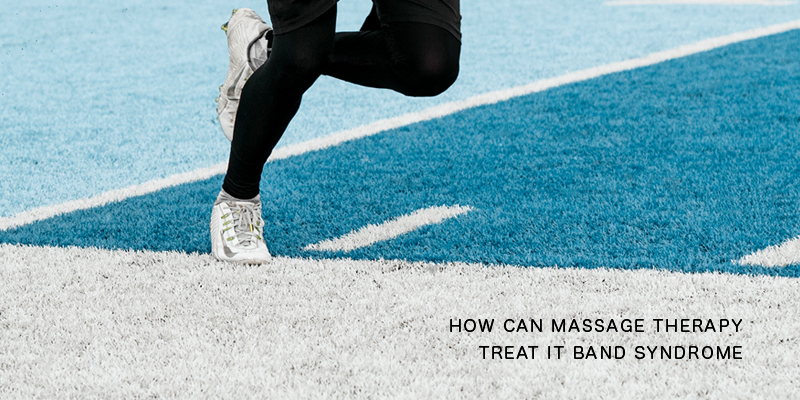By Maysa Tsang
QubeCore Registered Massage Therapist (RMT)
–
What is the iliotibial band?
The iliotibial band, also known as the IT band, is a reinforced tract of fascia that connects the tensor fascia lata (TFL) muscle, located on the side of the pelvis, and gluteus maximus muscle, a muscle located in the buttock, to the outside of the knee. It provides structural support to the lateral aspect of the knee.
What is IT band contracture or IT band friction syndrome?
IT band contracture is often felt as a gradual onset of achiness along the outer (lateral) aspect of the thigh and knee. Tenderness may be present at the greater trochanter, the bony protrusion lateral to the buttock. The pain and tenderness typically worsen with activity and an indentation in the lateral aspect of the affected thigh may be visible.
IT band friction syndrome is IT band contracture with the presence of point tenderness and inflammation where the IT band crosses the lateral femoral condyle, the little bony protrusion above and lateral to the knee.
What are some of the causes of IT band contracture/friction syndrome?
Some common causes of IT band contracture and IT band friction syndrome are:
- Activities that place the hip and knee into flexion. Examples are running, cycling, and prolonged sitting. Flexion of the hip is one of the functions of the TFL muscle. Prolonged and repetitive placement of the hip into flexion would allow the TFL muscle to shorten.
– Pronated feet with inadequate arch support. This “collapse” of the medial longitudinal arch can cause the leg and thigh to rotate inwards. Internal rotation of the thigh is one of the functions of the TFL muscle. Placement of the thigh into internal rotation, as a result of foot pronation, would inadvertently place the TFL muscle into a more shortened position.
– An imbalance of the muscles that support the hip. Weak gluteal muscles and shortened hip flexor muscles can pull the pelvic bowl into a forward tilt, thereby shortening the TFL muscle.
Because the TFL muscle is connected to the IT band, adaptive shortening of this muscle would characteristically pull at the IT band. Furthermore, this can lead to hypertonicity and the presence of trigger points in the TFL, gluteus maximus, and other muscles surrounding the hip and knee.
How does massage therapy help with IT band contracture/friction syndrome?
Various techniques are used in massage therapy to target the muscles for any hypertonicity, adhesion, or trigger points. Depending on the severity, several treatments scheduled at regular intervals may be needed to resolve the symptoms of IT band contracture or IT band friction syndrome.
QubeCore Sports & Rehab in North Vancouver offers therapeutic massage therapy for IT band contracture and IT band friction syndrome.
To book your appointment with our experienced massage therapists, call 604 210 2274 or simply BOOK ONLINE.

